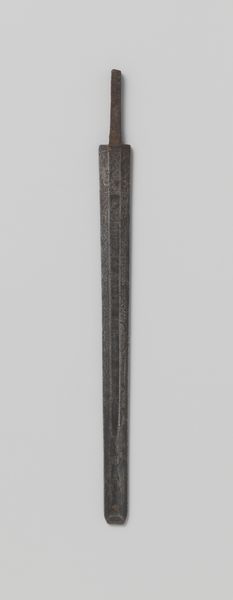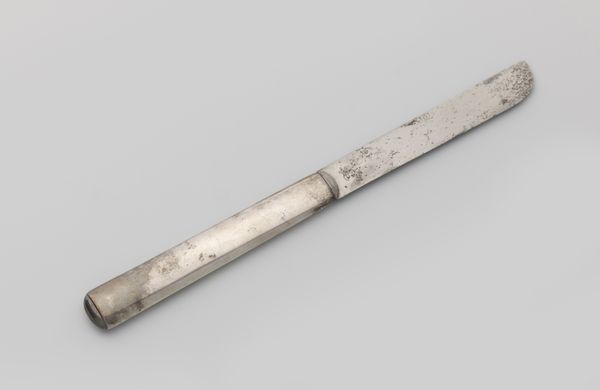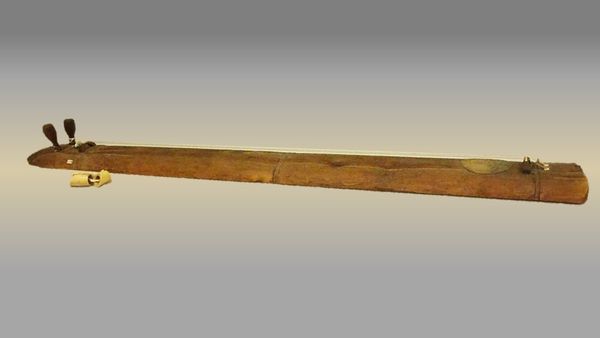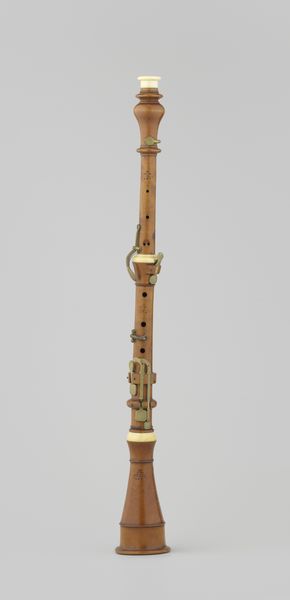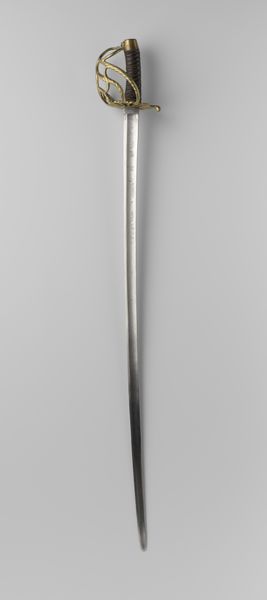
Onderstok van parasol of parapluie van bamboe met rechte haak van hertshoorn, met ring en punt van koper c. 1920 - 1940
0:00
0:00
mixed-media, metal, found-object, sculpture, wood
#
mixed-media
#
metal
#
sculpture
#
found-object
#
sculpture
#
wood
Dimensions: length 13 cm, length 2.1 cm, length 79.3 cm, length 2.6 cm
Copyright: Rijks Museum: Open Domain
Curator: Certainly. Editor: We’re looking at “Onderstok van parasol of parapluie van bamboe met rechte haak van hertshoorn, met ring en punt van koper,” which roughly translates to the bottom part of a bamboo parasol or umbrella with a straight antler hook, featuring copper details. It's dated around 1920-1940 and held in the Rijksmuseum collection. It strikes me as quite resourceful, the use of different materials seemingly based on what was available. What does this mixed-media construction suggest to you? Curator: This isn't just resourcefulness; it’s a conscious negotiation with available materials and the labor required to transform them. We have bamboo, a quickly renewable resource often associated with the East and its colonial implications, paired with antler, suggesting hunting and the use of animal byproducts. And then, the copper elements – a valuable metal mined and traded. Do you see the relationship here? Editor: I suppose it reveals how these materials are acquired, transformed, and then used in conjunction with one another, but how do they become art, or even an artifact worthy of display? Curator: Precisely. This object blurs the boundaries between tool, ornament, and perhaps even a statement. By elevating this "bottom part" - this supporting structure – we acknowledge the hidden labor embedded within everyday life. It makes us question what constitutes "art" versus "craft" based on its function or its maker’s intention. We are prompted to consider whether a “decorative” status, rather than practical value, creates the conceptual divide we seek. Editor: So it’s less about aesthetic appreciation and more about tracing the story of its creation and its place within systems of production and consumption? Curator: Exactly! It challenges the traditional view of the art object and instead focuses on the economic and social networks surrounding its creation and usage. Editor: This makes me rethink how value is assigned not just to objects, but to the very processes that bring them into existence. Curator: And that's the key. Appreciating how seemingly mundane objects reflect larger structures of labor and resources encourages that crucial shift in perspective.
Comments
No comments
Be the first to comment and join the conversation on the ultimate creative platform.



